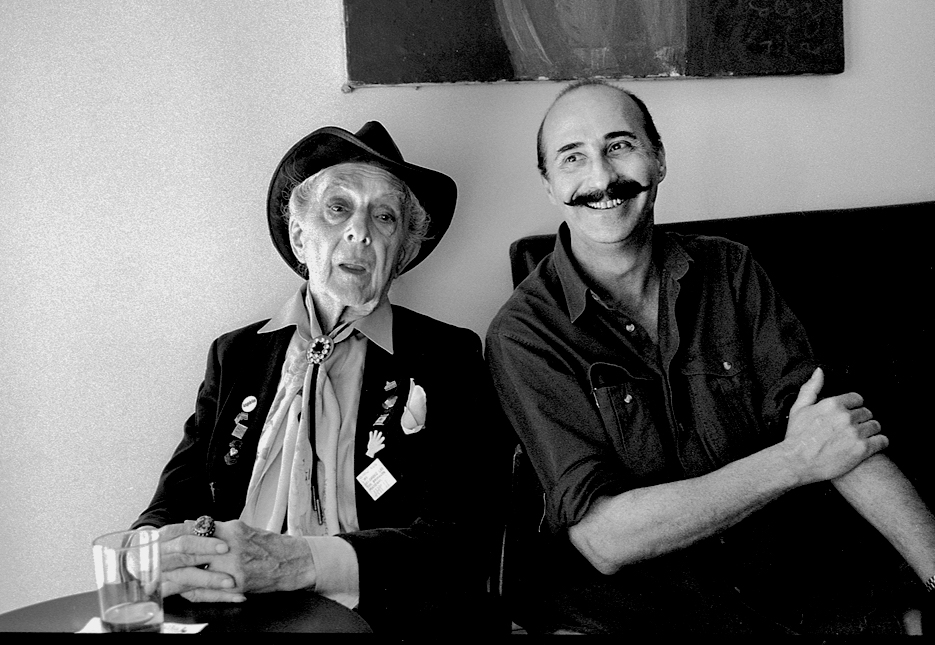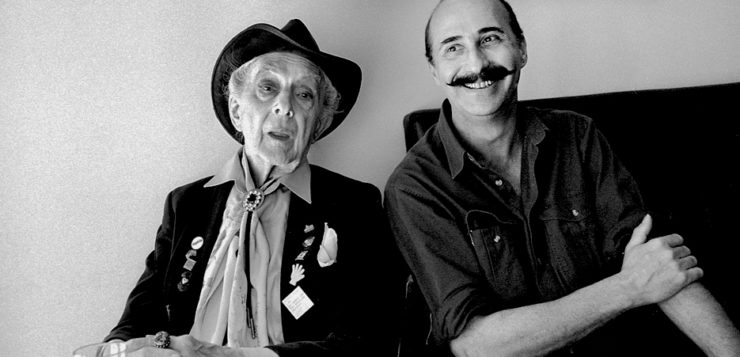Last November 21st marked twenty years since the death of Quentin Crisp (1908–1999). The man for whom Sting wrote “An Englishman in New York” died of a heart attack at age ninety in Manchester, England, where he had returned after eighteen years in New York to appear in his famous one-man show “An Evening with Quentin Crisp,” which he started performing in 1978.
A writer and actor as well as a model for Calvin Klein and Levi’s, Crisp stood out for his inexhaustible wit, which many compared to that of Oscar Wilde. He became widely known in 1975 when ITV made a film based on his autobiographical book The Naked Civil Servant, starring John Hurt. In 2000, his wax figure was installed in Madame Tussauds New York.
The Greek painter and photographer Dimitris Yeros, a friend during Crisp’s New York years, wrote the following in his memory. He took a series of photos during a 1998 visit to New York.
— Nick Lingris, Translator
DOES ANYONE DOUBT that most autobiographers distort reality, embellishing the truth about themselves, altering the facts relating to third parties, and presenting things in their own best interest? This makes Quentin Crisp’s case exceptional. He achieved something that was almost beyond the humanly possible: removing the writer from this paradoxical existence of the self and setting him down to calmly watch his tumultuous, scandalous, suspenseful, adventurous and often tragic life go by. He recorded it all with honesty, precisely as he saw it unfold, withholding nothing and showing himself willing to poke fun at himself.
Quentin the person was entirely consistent with Crisp the writer and public figure. He seemed to admire himself for the doggedness with which he persisted with behavior that was utterly unusual—visually speaking, primarily—as well as for his indifference to the consequences and all the unpleasant things that happened at his expense. He would simply record it all, not sparing a thought for the uproar his behavior would cause, so we could learn about a life many would consider possible in books alone. But Quentin not only existed in real life, where he was spectacularly present for ninety years, he was also exactly as he described himself in his book The Naked Civil Servant.

The unsuspecting passerby who happened to run into Quentin Crisp on the street would be unsure of his precise gender. In fact, I think many harbored doubts until the end. When, once, it crossed my mind to photograph him without the gentleman’s hat that never left his head and shared the idea with my agent, he urged me not to do so, anticipating a reaction that would be indistinguishable from that of an elderly lady!
Dimitris is an Athens-based artist and photographer whose works have been shown at 58 solo exhibitions around the world to date.







